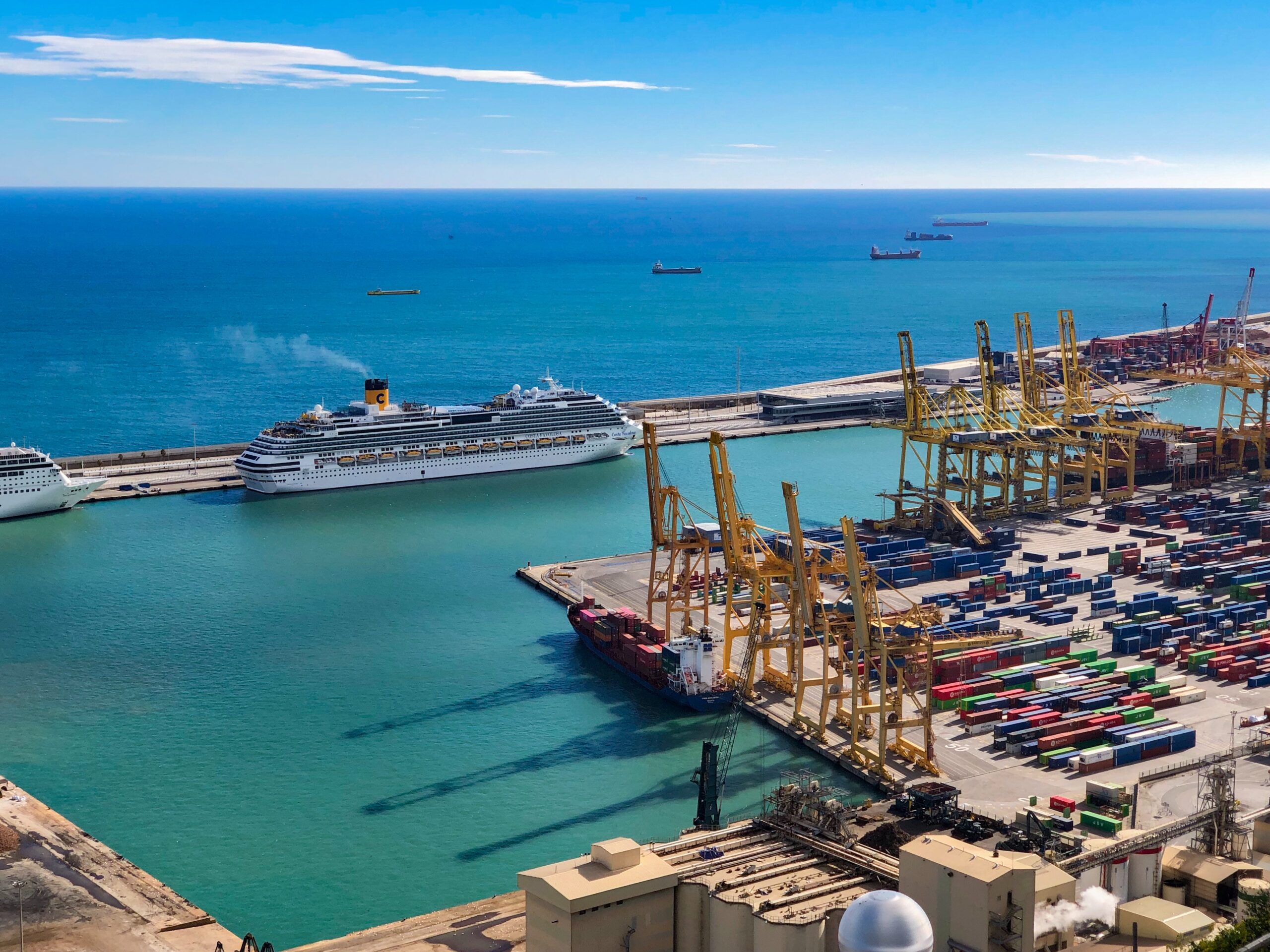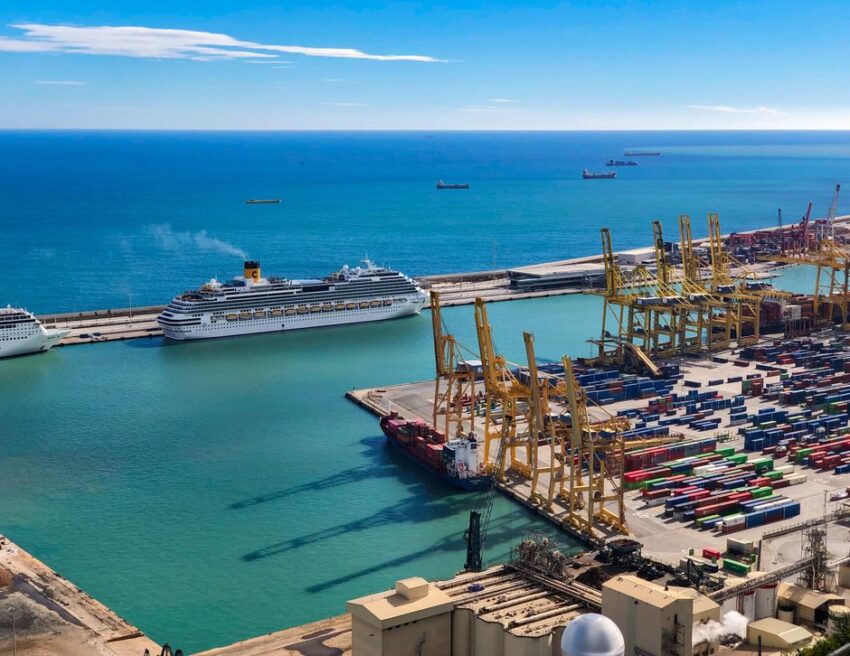Some of the most important players in the transportation and logistics industry have united to accelerate the process of digital transformation in the ocean freight shipping industry. BIMCO, FIATA, DCSA (Digital Container Shipping Association), ICC (International Chamber of Commerce) and SWIFT have signed an MOU for standardizing the digitization of global commerce. Keep reading today’s article to find out how these top industry associations are collaborating on the creation and adoption of digital standards for easier use of the Electronic Bill of Lading.

What is the Electronic Bill of Lading?
The Bill of Lading or B/L is a legal document that the carrier issues to the shipping agent. This paperwork includes all the important cargo details like volume, commodity type, destination, etc. This is by far the most important document required for moving international shipments by sea. The Electronic Bill of Lading or eB/L is the online version of the paper B/L. It has the same function as the paper B/L but comes with several advantages like security, speed, and accuracy of data. Previously the shippers had to post the B/L to the consignee in another city or country. However, the electronic B/L saves the hassle and unreliability of a courier. One can now just mail a copy of the document to the consignee. Moreover, it also allows the stakeholders to transfer this important doc to any other parties involved in the shipping process.
Reception of the Electronic Bill of Lading in the ocean freight shipping industry
The container shipping industry has still not widely accepted the eB/L as a standardized system. The main reason behind this is the lack of compatibility among the several parties who are developing their own eB/L. Last year, ONE, MSC, and Hapag Lloyd adopted the eB/L as a standard format. According to a report by Seatrade Maritime News, the primary aim is to bring together all the stakeholders around the idea of an eB/L that will be eventually accepted by banks, insurers, and regulators. However, something like this will only be possible by further communication between all the parties involved in the global maritime trade transactions.
The FIT Alliance
FIATA, BIMCO, DCSA, ICC, and SWIFT have together created an alliance called the Future of International Trade or FIT. The objective of this alliance is better organization of information and adoption of the best management practices for overseeing the digitization of these transactions. In other words, the FIT seeks to bypass the disparity in the norms of digitization in the shipping industry.
The FIT Alliance focuses on raising awareness about the importance of data standardization. Additionally, it will also create awareness about the standard judicial systems that are widespread across the international legislatures and platforms. The most important objective behind the FIT alliance is to bring together the various stakeholders for the eB/L from the ocean freight shipping sector. Moreover, it also urges the banks, regulators, and insurers to adopt digital standards.
How the FIT will accelerate the digital transformation of the container shipping industry
In the words of Thomas Bagge, the CEO of Digital Container Shipping Association, “From the beginning, DCSA has understood the importance of cross-industry collaboration to achieve the elusive goal of universal eBL. The FIT Alliance is one exciting result of our ongoing effort to drive that collaboration.” He further explains that the container shipping sector is responsible for moving around 90% of international shipments. For this reason, a varied range of stakeholders is involved in the Bill of Lading transactions. For example, insurers, government regulators, and shippers from several industries are a part of this process. It goes without saying that, all of these stakeholders need to accept the digital transformation of the B/L.
Therefore, the understanding among so many important industry associations is a significant milestone in the digitization efforts of the container shipping industry. The electronic documentation initiative will help to standardize the paperwork of the entire logistics industry. Mr. Bagge further adds, “We applaud the foresight and leadership of these organizations for joining us in the effort to bring greater transparency, efficiency, reliability, and sustainability to the container shipping industry.”
The alliance of the important trade associations is a major step forward for adopting the eB/L
The coming together of the key industry players for fostering the adoption of digital B/L will make the shipping process secure, consistent, and simple. Moreover, it will boost the productivity of the stakeholders. The FIT will augment the coordination within the global transportation and logistics sector. It will allow for easy data exchange which will ultimately streamline the door-to-door shipping process. To quote Dr. Stephane Graber, the Director-General of FIATA, “An industry-wide effort to establish open-source, interoperable, technology-agnostic standards is essential to make digitization of international trade a reality.”
Wrapping it up
In conclusion, we can say that the FIT Alliance will result in an uncomplicated international shipping process. Collaboration is the key component that will allow the players in the maritime shipping sector to develop and accelerate the adoption of digitization.
As one of the leading freight forwarding networks of our time, The Cooperative Logistics Network has been offering over 320 members the capability to compare competitive freight rates, send/receive a quote instant, book online, organize and share shipping documents effortlessly, and track shipment in real-time by developing a groundbreaking online platform –FreightViewer. The objective of FreightViewer is to offer a digital infrastructure to enable the establishment of an automated data transfer of carrier rates and tariffs. For the first time, independent freight forwarders are able to create instant accurate quotations, and exchange rates and have a 24×7 showcase for their freight rates without any investment on their part.
By processing all the freight forwarding operations within a single channel, FreightViewer is enhancing the visibility of all the stakeholders in the shipping process. In the shipping sector when the instant response is absolutely crucial, FreightViewer is greatly helping to enhance the operational efficiency of independent freight forwarders like you. Additionally, it is reducing the members’ expenses, saves their time, eliminates manual error, augments visibility and security, and minimizes the steps involved in shipping operations.
Join us today to digitize your business, find new partners and expand the scope of your business!


